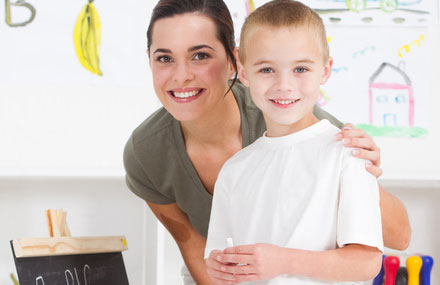As if 2020 hadn’t already brought enough stress and uncertainty on us all, we’re now dealing with a challenging post-election period and the impending holidays. This tsunami of stress is taxing parents, children, and families in ways that can feel completely overwhelming, with few options for relief in sight. By this point you may have exhausted your collection of tools for managing uncomfortable feelings for yourself and your children, and wonder what on earth you can leverage to get through these next 2 months.
During this time of immense tension and uncertainty, we need concrete solutions to support ourselves and our children. There is a lot of information popping up in our news feeds and elsewhere about self-care activities, managing our children, and handling work stressors during this time. But what we need most are efficient tools that address multiple needs all at once, without requiring additional time or effort that we just don’t have.
Enter family meals.
Research has long shown the benefits of family meals for strengthening relationships, reducing stress, supporting child development, and improving mental health in children and adults. Studies demonstrate that regularly eating together as a family can reduce teen substance abuse and pregnancy, improve school grades and self-esteem, strengthen vocabulary development, and lower the rate of obesity and eating disorders for children and teens. But adults benefit, too, as studies show improved mood, less stress, and better relationships with partners and children.
There are very few strategies we can implement that have the potential to impart as many benefits on every member of the family! Add to that the fact that we are eating and feeding our children multiple times a day, and you have the potential to reap powerful benefits without added time or stress.
And as the holidays approach, and we anticipate navigating the challenging family dynamics that can come along with them, we can leverage family meals as a way to promote healing and health – not more anxiety and strife.
Over the years, mealtimes in America have increasingly turned into grab-and-go pit-stops on the frenzied highway of modern family life. Even now, with fewer places to go during the pandemic, many families are still engaging in haphazard meal routines without even realizing it. As a result, many children and families are missing out on the protective benefits more traditional mealtime routines can provide.
Family meals allow us to slow down and connect with one another in positive ways. The rituals involved in family meals are soothing and reduce anxiety. They also provide a critical element of structure for children, who thrive on routine and need these predictable moments more than ever in this year of incredible uncertainty.
So what does a “family meal” that provides positive benefits actually look like? Here are the main things to consider:
- Everyone sits down to eat at the same time in the same place, ideally a table or space designated for eating activities. Even if all family members are not home for the scheduled meal, research has shown that even one adult sitting down to eat together with a child can bring benefits. The key here is that there is a set time and space for everyone to gather and spend time focusing on each other and the routine of serving and eating food.
- Ideally families are eating food that has been prepared at home, as this supports physical and mental health in many important ways. However, the research shows that sitting down together for a family meal routine with take-out food can still provide a host of important benefits. So if making a home-cooked meal most nights of the week creates additional stress, don’t allow that to get in the way of establishing supportive family meal routines! The rituals involved with sitting at the table and spending time together matters more than what is eaten.
- These are device-free events. That means everyone leaves their electronic devices in another room, or a basket on the counter, during the meal. The TV and other distractions in the background should be off, and you should not be gathered to eat in front of the television or computer. This allows for everyone’s focus and attention to be on each other and the activity of eating, which provides fertile ground for strengthening relationships and communication.
- Avoid placing all of the responsibility for family meals on one person. Included in the family meal routine should be prep and clean up tasks, with everyone helping out to do things like set the table, prepare food, and clean up afterwards.
- Create a supportive environment by engaging everyone’s senses in a calming way. Play quiet soothing music in the background. You can even dim the lights and/or light some candles to provide a comforting visual experience. Pace the meal so it’s not rushed with everyone shoveling food and racing off to their own activities immediately. Commit to spending at least 20 minutes together – and even longer depending on the ages and needs of the children.
- Encourage communication and conversation that is healthy and positive. Particularly where holiday meals with extended family members and friends are concerned, set a boundary on avoiding tense topics – especially while children are at the table. To help ensure relationship-building dialogue, consider investing in a deck of conversation cards for families. These provide prompts for non-controversial things to talk about together. Other ideas include going around the table to allow time for each person to share a highlight from the day, something they are grateful for, something they are looking forward to, or a special family memory. A compliment circle, where each person gives a compliment to the others around the table, is another great way to engage in supportive communication and create consistently positive emotional experiences together.
The Bottom Line
As we continue to navigate the choppy waters of 2020 through the post-election and holiday season, prioritizing at least a few family meals each week can be a welcome life preserver. Don’t stress over the details. Just gather everyone together, power down devices, put some food on the table, and spend time focused on each other. Put this routine on repeat, and you can rest easier knowing you are doing something incredibly valuable for your family’s mental and physical health during this period of unprecedented challenges.
What You Should Do Next:
Sign up for my Better Behavior Naturally community newsletter
Sign up for my newsletter to get tips, resources, and supports to improve your child’s attention, anxiety, mood, and behavior…while making your job as a parent easier.
Enroll in one of my workshops
Check out one of my many workshops where you’ll join my exclusive community of parents in a one-of-a-kind virtual resource accessible 24/7. Whether you’ve got a child with a diagnosis like autism or ADHD, or are becoming more and more frustrated with a child who struggles to listen and cope, these workshops are designed to give you the information, tools, and support you need…whenever you need it.








